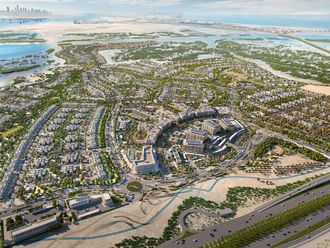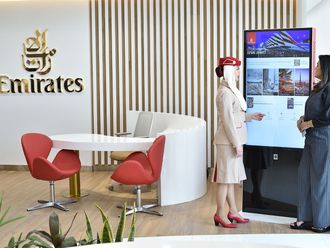Behind the latest angst in the markets is the structural transformation certain economies are making from an investment and tourism oriented one to one that is more reliant on domestic consumption and savings. This is true for China, but it is equally true for Dubai, an economic structural shift that arguably began in 2009-10.
The diversification of the economy since achieved has had important implications for the housing sector, and it is this data that needs to be examined to determine the future course of investments.
It is interesting to note that Dubai has attracted the most amount of attention in the media for its blue-ribbon real estate projects over the years. As investments poured in for these upscale projects, the common zeitgeist in the market quickly became one of investing in trophy assets to maximise capital gains.
This is confirmed in the most recent real estate cycle from 2009 to 2015, where areas such as Dubai Marina and Palm Jumeirah appreciated by 39 per cent and 34 per cent respectively, as compared to price appreciation of 22 per cent for JLT, 7 per cent for International City and 13 per cent for Discovery Gardens.
However, the cumulative impact of rental returns have often been ignored in the debate. When a total return analysis is conducted, the narrative changes and return differentials narrow considerably. In Dubai Marina, the total returns including rental rates for the same period jumps to 93 per cent and Palm Jumeirah increases to 80 per cent.
However, what is of note is that the total returns for JLT jump to 81 per cent, Discovery Gardens increases to 78 per cent and International City to 75 per cent over the same six-year cycle, making it virtually equivalent to their higher income counterparts. This indicating that the case for investing in trophy assets is not as clear cut as it was made out to be.
What is going on? The data indicates that in the current cycle, there has been considerably higher demand for mid-income properties, as a combination of the end-user effect and a higher relative demand at the mid end takes shape. This underscores the structural transformation that is taking place in the economy, and explains why rents continue to be “sticky” in this segment of the market, even as prices have corrected somewhat significantly at the higher end.
Perhaps, more importantly, the data also reveals the type of returns investors are obtaining in the different segments of the market. In high-end properties, capital gains have accounted for approximately 40-45 per cent of the total gains recorded. In mid income areas, rental income (annuity cash flows) account for more than 75 per cent of the total returns recorded.
This implies that contrary to popular belief espoused in the marketplace, mid-income properties are actually less volatile and therefore less risky when compared to higher end properties. As any upside that is potentially lost is more than made up in the form of significantly higher annual rental incomes.
To be sure, the absolute amount of rental yields is abnormally high in Dubai when compared to some of the more developed markets, and is likely to reduce. It is a trend that has already started to be witnessed over the course of the last 12 years.
However, it is equally critical to note that in response to this higher total returns, developers have responded, to the extent of offering supply in the studio and one-bedroom category at the mid-income level. While this caters to the investor and the young urbanite, it does little to stoke demand at the mid-income family level, which is the burgeoning segment of the market.
Interestingly, data patterns are starting to reveal that the two-bedroom space has actually started to outperform the one-bedroom segment in this price cycle as the end-user effect starts to get underway.
The patterns for returns indicate that there is truly a shape shifting transformation underway in the economy, and reflected in the real estate market dynamics in the last six years. The current global turbulence gives further credence to this analysis, as foreign investment flows have reduced and increased the attractiveness for assets that offer stable cash flow returns.
Dubai’s experience over the last six years indicates similarity to the ones in more developed economies as the economy matures. Also, the trajectory of its structural economic transformation will continue to manifest itself in the form of higher demand for mid-income housing with continued prospects for higher returns in the years ahead.
The writer is Managing Director of Global Capital Partners.











